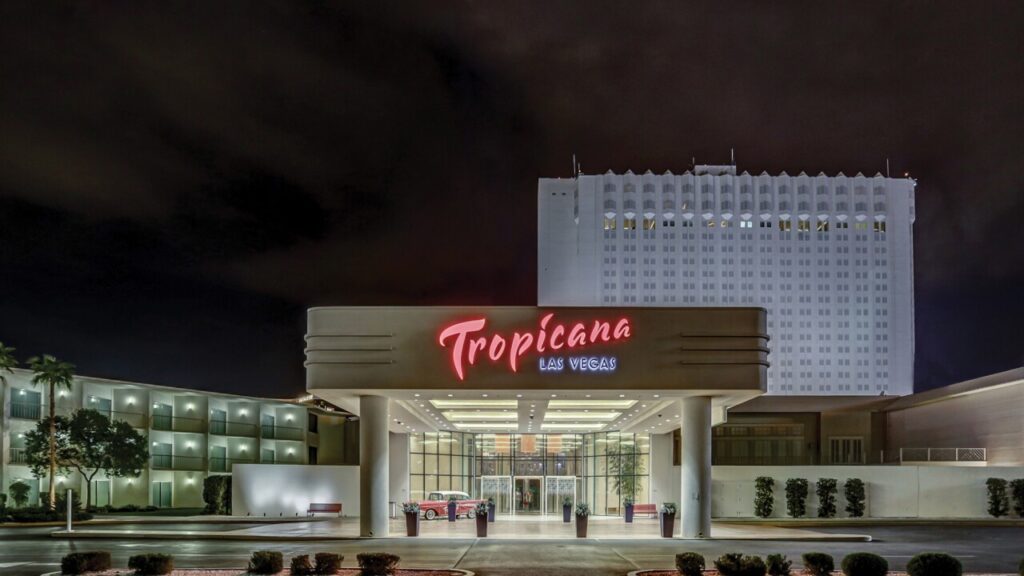
The recent implosion of the Tropicana marks the end of an era for Las Vegas, taking down the last remnant of the city’s notorious mob history that stood on the iconic Strip. The razing of the hotel towers wasn’t just a demolition but a spectacle—true to Las Vegas form—with a coordinated fireworks display and the sort of fanfare usually reserved for grand openings rather than closures.
This was the first such implosion in nearly a decade for a city that has made a name for itself not only through its lavish attractions but also through its flair for dramatic endings. Over the years, implosions have become more than a necessity; they’ve been transformed into entertainment, attracting locals and tourists alike, eager to witness the literal rise and fall of Vegas’ fortunes.
Geoff Schumacher, historian and vice president of exhibits and programs at the Mob Museum, noted how these events are symbolic of the city’s penchant for reinvention. “What Las Vegas has done, in classic Las Vegas style, they’ve turned many of these implosions into spectacles,” he said.
This showmanship, however, has a history of its own. It was Steve Wynn, the former casino mogul, who revolutionized the way Las Vegas handled its demolitions. In 1993, Wynn didn’t just implode the Dunes to make way for the Bellagio—he created a narrative. The Dunes’ end was presented as if it were under attack by pirate ships from his other casino, Treasure Island, with the spectacle televised to the world.
The Tropicana, with its storied past, was a vestige of an era where the mob’s influence ran deep. The building’s demolition not only signifies progress but also raises questions about the preservation of the city’s complicated history. With every implosion, Las Vegas buries a piece of its past, making way for a newer, shinier future, while the memory of what once stood is etched into the dust cloud that lingers for a fleeting moment before settling down—just like the bygone era of the mob.
No comments yet.








